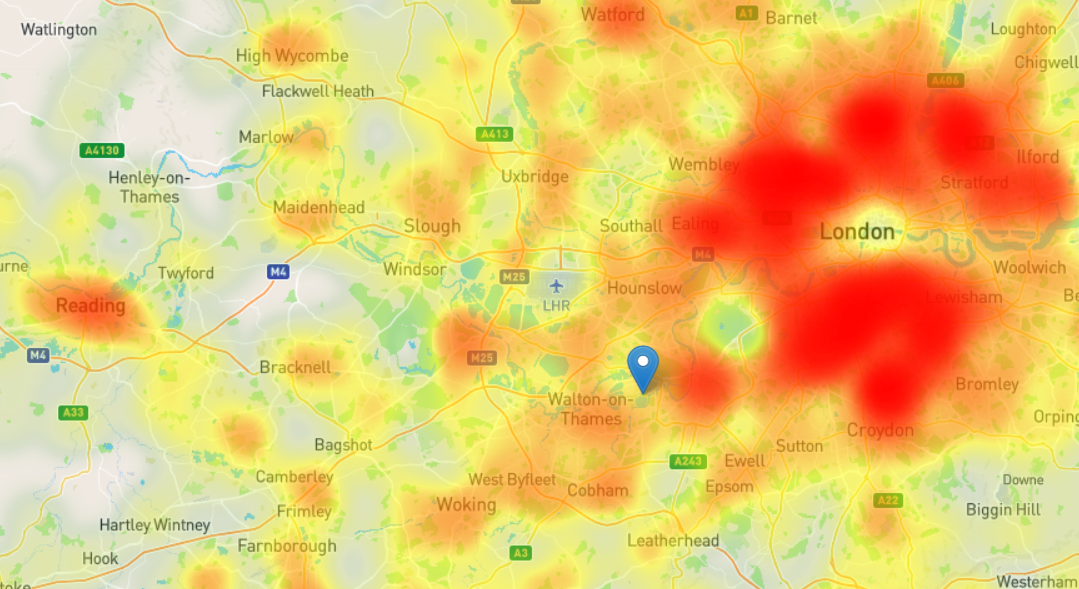Furniture designer Jonathan Downing this week successfully sued the former owner of his house after discovering a large amount of Japanese knotweed in his garden.
The previous owner of the property, not far from us over in Raynes Park, Surrey, was ordered by Central London County Court to pay damages plus Mr Downing’s legal costs. Once his own legal costs are factored in, the bill facing accountant Jeremy Henderson is likely to be in excess of £200,000.
Mr Downing bought the £700,000 property in August 2018. While tidying the garden soon after moving in, he discovered Japanese knotweed canes behind a large St John’s wort bush which was growing next to the shed.
Mr Downing sued Jeremy Henderson over the discovery, accusing him of misrepresenting whether there was knotweed at the property when he sold it.
The case has highlighted the perils of the highly invasive Japanese knotweed when it comes to buying and selling a property that may be affected by it.
TA6 property information form
The presence of the weed can potentially dent the value of a property, which is why the seller is required to state whether it is present on their property through the TA6 information form.
The TA6, which was revised in February 2020, includes the following question: Is the property affected by Japanese knotweed? The response options are ‘Yes’, ‘No’, or ‘Not known’.
“If you answer ‘Yes’, you will be asked to provide a management plan for its eradication from a professional company,” says Eve Wilson of our conveyancing team. “You can only answer ‘No’ if you are certain there is no Japanese knotweed within the property boundary.”
How to spot Japanese knotweed
Japanese knotweed is a particularly nasty example of an invasive weed. It grows incredibly fast (up to four inches a day) and can cause structural damage, breaking through concrete and undermining foundations.
There are three visual identifiers: White flowers that grow in clusters; bamboo-like red or purple stems; large, heart-shaped leaves. If you can, you should search for images online for a clearer picture.
It’s important to note that the weed dies back in winter so can be hard to spot at that time of year.
“If you discover knotweed on your land and you decide to leave it, you’re not breaking the law and it’s not a notifiable weed either, so you don’t need to report it to the authorities,” says Nic Seal, MD of Environet UK, which has produced an online heatmap of knotweed sightings across the UK.
“However, you do have a legal obligation to prevent knotweed from spreading to neighbouring properties, and failure to do so could result in legal action under Private Nuisance legislation – or even an ASBO!”
What does this mean for sellers and buyers?
It’s very difficult for a seller to be absolutely positive that there’s not even a single rhizome (root) within three metres of their property, says Ade Ajani.
“The most sensible option would be for the seller to answer the TA6 form’s Japanese knotweed question ‘Not known’, which puts the onus on the buyer to be all the more vigilant.
“If you’re thinking about buying a property whose owner has ticked the ‘Not known’ box, you may want to consider arranging a Japanese knotweed survey of your own – although you will need the seller’s permission.
“If Japanese knotweed is present, your contractor will then be able to recommend a suitable knotweed management plan to keep it under control.”
What if there’s Japanese knotweed next door?
If Japanese knotweed has been discovered on your next-door neighbour’s property, your main concern is to prevent it spreading onto your side of the fence.
As mentioned earlier, In England and Wales, your neighbour is under no legal obligation to remove or treat Japanese knotweed on their own property. But the moment the knotweed creeps over the threshold and into your land, it can classed as a private nuisance.
“You should really try to avoid taking legal action on a neighbour,” says Ade. “The best option is to try to work together to alleviate the problem.
“However, if you can’t come to an amicable solution or your neighbours are simply denying that a problem exists, a specialist company can provide your neighbour with documented evidence of Japanese knotweed on-site along with an official letter setting out their legal obligation to deal with the issue to stop it spreading to your property.”
How can Japanese knotweed be treated?
The least expensive option for the removal of knotweed is herbicide treatment over two to three years.
An insurance-backed guarantee can then be secured, meaning there will be less difficulty obtaining a mortgage and the property can be bought and sold.
This article is for general information only and does not constitute legal or professional advice. Please note that the law may have changed since this article was published.
